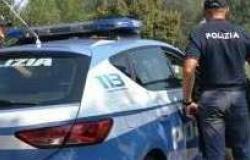
Savona is the province of records which, however, create a pernicious short circuit which rather than amazes, scares: if on the one hand it is here that more than 90% of regional wind production is concentrated and the largest share of photovoltaic production (27, 3%), on the other hand the Albenga plain represents without a shadow of a doubt the most important agricultural area in Liguria, with its approximately 1,400 hectares of cultivated area. Furthermore, the agriculture of the Savona area is now ranked first in terms of PLV (Gross salable production) within the agriculture practiced in the four Ligurian provinces. We are talking about the herbaceous cultivation sector, specifically flowers and plants. In addition to this, the province of Savona is the target of the Vado Ligure regasification terminal project, which will be moved from Piombino to the Ligurian port. Finally, the Italian Railway Network project is being completed in the area, which has as its object a new railway line between Finale Ligure and Andora, which aims to be built by 2035.
Although all this does honor to a growing province that demonstrates enviable dynamism, the truth is that the price we pay lies in the land we walk on: or rather, in the land our farmers have cultivated for generations. the ground is diminishing visibly. The average size of horticultural companies in the Albenga plain is less than one hectare and given the high need for manpower for the production of potted plants, each farming family makes use of the collaboration of numerous agricultural workers. The primary sector in the western Savona area (including the plains of Pietra Ligure, Borghetto Santo Spirito, Ceriale and Andora) has around 1,500 agricultural businesses with more than 5,000 employees. If we consider how much is produced by the related industries, we understand very well how the agricultural sector is the main sector from an economic and social point of view of the entire area.
Now superimpose this image of land which represents the flagship of an entire region: three thousand days – almost 9 years – to complete the railway project which aims to create, in addition to new stops and stations, a double track in the railway section between Finale Ligure and Andora. They say that this way the trains will be able to reach 190km per hour. More will pass, we are talking about metropolis numbers: up to 120 convoys per day. For a leading sector such as agriculture this means only one thing: huge economic losses, cancellation of commercial contracts and a clear reduction in market capacity. According to an analysis by Coldiretti, the productive agricultural land in the province has an average commercial value of around €55 per square metre. This means that per hectare a value of €550,000 is assumed.
If we take for example, as from the reports accompanying the railway project, the at least 27 hectares that will be allocated to construction sites for almost 9 years – at least 7 of actual works according to the Commissioner – on land currently destined for flower production, we are talking about a loss equal to at least €110,000 per hectare, for each production cycle. Which means over 3 million hectares for a single production cycle, just for the construction sites. “Are we saying that as Coldiretti we are against doubling? The answer is no,” comment Marcello Grenna and Antonio Ciotta, President and Director of Coldiretti Savona. “But these continuous infrastructural investments to the detriment of agricultural land are seriously compromising the agricultural world, which is now outraged by the movement of the railway towards the hinterland. Do we then believe that after these 9 years that soil can be reused? Of course not. We will lose him forever.” A project of this magnitude, in fact, – not to mention the disproportionate cost which will reach 2.4 billion euros – will sacrifice in total, between construction sites and new lines, stops, platforms and stations, approximately 108 hectares of the Albenga plain, or 10 % of current agricultural area. “We are in favor of doubling, yes, but leaving the tracks in the current site, as was done from Finale Ligure to Genoa.”
And the railway is not the only investment that sacrifices precious agricultural land in a region where the UAA (Usable Agricultural Surface) is among the lowest in Italy. The Liguria Region has in fact just published the notice with the complete list of lands affected by the Vado Ligure regasification plant project, both for temporary occupation and for expropriations. How are the gardens and fields involved in this case? “A pipeline will depart from the gasifier ship which, once it reaches the mainland, will cross the hinterland, moving inland until reaching Cairo Montenotte; here, it will intersect with an already existing pipeline and then, in the Quiliano area, a processing plant will be built. Translated? Agricultural territories to be sacrificed, in yet another operation that takes place without involving the territory, much less its communities of citizens and workers,” continue Grenna and Ciotta. “Let’s add to this the Monte Cerchio wind farm project, which the community has declared itself strongly against”. This would be yet another example of environmental upheaval with repercussions on families and farmers. “We are for innovation, of course, but how can we promote environmentalism if this implies the sacrifice of the territory? It doesn’t make sense.” Grenna and Ciotta conclude: “We believe that responsibility towards rural communities is the agenda that cannot be postponed, neither today nor ever”.




